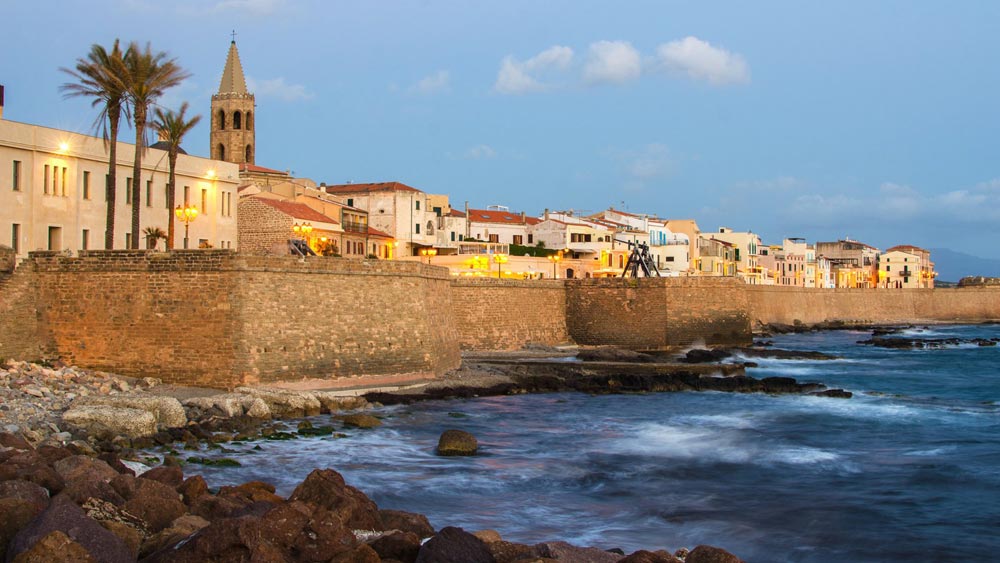13 Mar ALGHERO, THE BEAUTIFUL CATALAN CITY
Alghero is a beautiful Catalan city facing the Sardinian Sea.

As many other cities on the islands, Alghero has been subject to various occupations. The Catalan occupation is probably the one that has mostly marked its history. Not just the historic centre reminds of the Catalan past, but also the idiom the food. Alghero, in fact, is considered a linguistic island, and in its restaurant it is easy to find, beside the local sea specialties, the Paella and the burnt cream, a variant of the Catalan cream.
The city is partly separated from the sea through wall bastions, but it is not simply facing the sea. Watch Alghero from the pier, or from any other observation point along the sea promenade: you will perceive how the houses seem to lean toward a distant sea horizon. Or maybe it’s just the suggestion deriving from the perfect mix of architecture, water and sky. It takes the mind away, leading it back to a lost past…
But the point is that Alghero has a charm of its own.
The historic centre of Alghero can be easily visited on foot. What strikes most the visitor are the towers and bastions, especially on the sea promenade. There are also many other beautiful palaces and buildings worthy of note.
In Alghero street signs and place-names are written both in Italian and Catalan. Infact the historic centre streets are always designated with their ancient Catalan names.
One of the most appreciated events in town is the Festivalguer. It is a mix of concerts, exhibitions, performances and other entertainments either for the local people and the tourists. The festival takes place every year from June to September, culminating with the Mediterranean Port. It is a thematic event that’s dedicated to cultures of the Mediterranean Basin. While among all the religious manifestations, the Semana Santa (Catalan Easter) is probably the most beloved one.
The mild climate makes Alghero a favourite destination all year round.
The mistral wind constantly sweeps the coast, and the sky is always blue, even after a rainfall. And a dry period in the depths of winter is not unusual here. On the contrary, this phenomenon has been also given the name of “secche di Gennaio”, a foretaste of summer in a region where summer is very long and dry.
The city is placed in the middle of a beautiful bay, faced by spectacular calcareous massifs, like Cape Caccia. Here it is possible to practice immersions and, upon authorization, sport fishing and scuba diving in the sea caves.
This area has been in fact designated as the Sea Protected Area of Cape Caccia and Isola Piana. Therefore you’d better ask before which are the free access areas, those requiring a permission, and those forbidden (except for study and research purposes).
In this marine area it is possible to visit some of the biggest underwater caves of Europe and the amazing coral depths from which the shore got the name of Coral Riviera.
Those who don’t practice underwater activities may as well enjoy visiting the western side of the Nurra region(stretching between Alghero, Sassari, Porto Torres and Stintino). It offers beautiful hidden coves, like Cala Viola or Porto Ferro, this last one giving its back to the Lake Baratz, the only natural lake of Sardinia. And finally the Argentiera, with its ruins resembling a ghost town of the Far West.
All these are really impressive places, and their suggestion is increased by the fact that they are less crowded respect to the trendy beaches of the Asinara Gulf.


